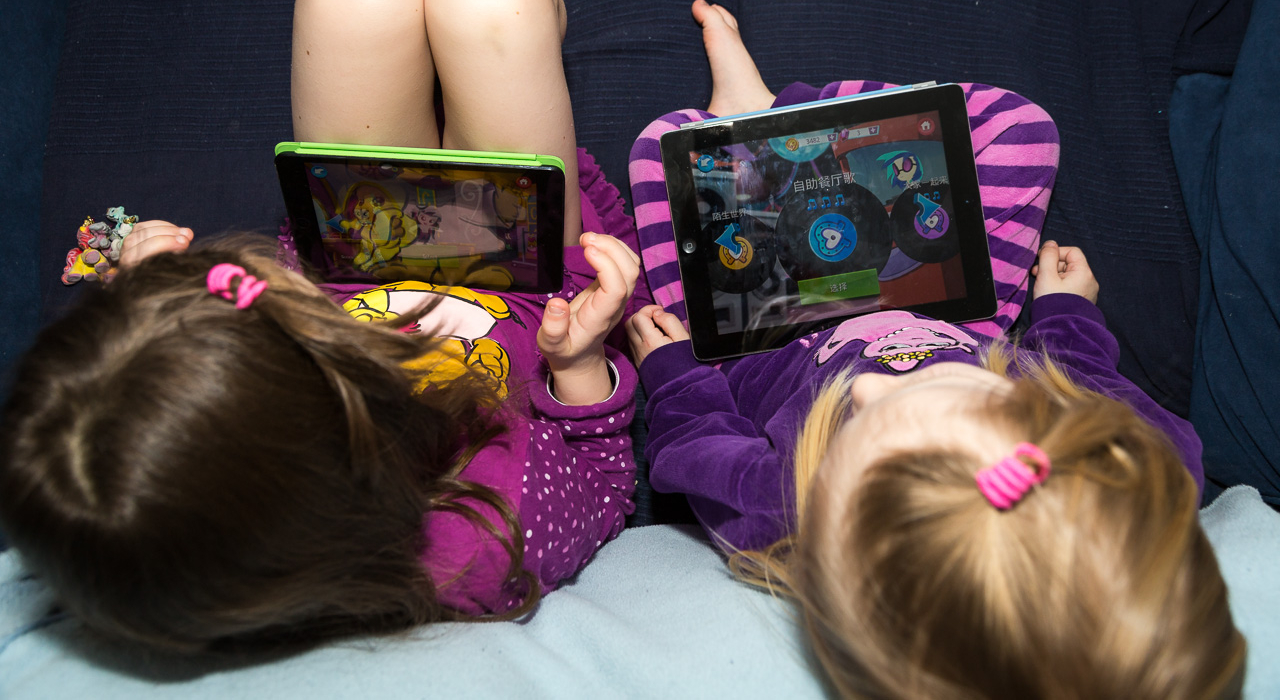Looking back over the past six months, it is astonishing how everyday life has changed, and with it the role of digital technologies. The last six months were also special because they led up to the publication of our new book Parenting for a Digital Future: How Hopes and Fears about Technology Shape Children’s Lives (Oxford University Press, Amazon) by Sonia Livingstone and Alicia Blum-Ross.
A couple of blog posts gave a preview of our findings. We argued that society should stop criticising parents and start supporting their digital practices; also that we can learn from parents who are confident about raising digital kids, observing how they share the decision-making within the family, negotiate instead of impose, respect their children’s interests and find pleasurable ways to share digital activities. The book’s US launch is at 5pm (London time) today, hosted by Sesame Workshop/Joan Ganz Cooney Center (still time to register). You can read the first chapter (“Expectations”) for free here.
What else did we discuss with you over the past six months?
Life under lockdown
As the world was trying to grapple with the global pandemic, several of our contributions explored how life under lockdown changed and the long-term implications. We discussed how everyday life has become ‘digital by default’ and the potential consequences of families’ reliance on technology – whether to hasten a digital future in which our lives are tracked and monetised in unprecedented ways, or make the public more aware of such risks and thus resistant to all things digital. Covid-19 seemed to put more wood on the fire of long-standing challenges as families struggled to manage the explosion of misinformation online and parents braced themselves helping children deal with social isolation, uncertainty and risk.
In contributions by guest authors Velislava Hillman and Giota Alevizou, we also discussed learning in a time of global pandemic where virtual schooling means that educators, children and parents are juggling an ocean of resources and learning techniques in the midst of worries about health, social distancing, jobs and other responsibilities. While some families struggled to keep up regular routines, such as home reading, others enjoyed more time together and took up digital opportunities, such as video-call shared reading with children, as Natalia Kucirkova and Trude Hoel showed in their blog. This brought to the fore the scale of digital and socio-economic inequalities and concerns about the quality of children’s education in a context of digital fatigue.
Digital literacy and online opportunities
The role of digital technologies for learning and other opportunities became ever more prominent as our lives became more digitised than ever before. We discussed the digital media use of under-eights in a contribution by Kate Gilchrist, showing that engagement with digital technologies enables informal learning which is important for children’s pre-school knowledge and competence. Especially designed digital learning spaces, such as the hands-on makerspaces in the San Francisco Bay Area, can help children’s self-efficacy and critical thinking by participation in collaborative, project-based learning. Even in poorer contexts with less accessible internet, the online environment offers children new opportunities. We discussed, in a blog by Monica Bulger and Patrick Burton, how marginalised teens in East Asia use social media for connecting with the larger world, meeting new people, sharing their talents, and even earning money. These blog authors all noted the need to mitigate, if possible eradicate, the striking inequalities related to income, gender and race which impede children’s digital participation.
Digital media and risk of harm
Several contributions addressed the negative consequences of children’s internet use. EU Kids Online’s survey with 25,000 children aged 9-16 from 19 European countries showed that the time children spend online each day has almost doubled over the past decade and the proportion of children who experience online risks has also increased. However, more risks do not necessarily result in more harm as the proportion of children who report being upset or bothered by something online has increased less than the amount of risk. Based on the same findings, another contribution, by Marie Bedrošová, showed that at least one in five children aged 11-17 have seen cyberhate content. Another two contributions from the mini blog series by Monica Bulger and Patrick Burton discussed children’s experiences in East Asia and the ‘dark side’ of social media apps which can create child sexual exploitation and child trafficking risks. Both blog posts called for increased corporate responsibility to reduce risks on their social media platforms and ensure prompt reporting cases of online sexual exploitation of children to law enforcement. The issue of corporate responsibility was raised also by Marco Scalvini who explored the debate surrounding the detailed media depiction of teenage suffering and the moral responsibilities of creating controversial content developed for a young audience, looking at Netflix’s show 13 Reasons Why and its link to suicide.
Online privacy
Another prominent theme on our blog was online privacy. Exploring children’s understanding of privacy in the platform society, we argued that we cannot expect children to comprehend data commercialisation and profiling when the industry makes their data practices so complex and opaque. Similarly, a blog post by Monica Bulger and Patrick Burton discussing understandings of data privacy among teens in East Asia showed that children internalise messaging from tech companies and governments that expect the individual to protect their privacy without any actual transparency or ability to control social media platforms’ data privacy practices. This finding is echoed by teens’ experiences of gaming – while they appreciate being able to socialise and have fun while playing with peers online, most children know (and are told) little about protecting their data from what the platforms collect and share, as Monica Bulger and Patrick Burton discussed. It is not only children who face these challenges, their parents also struggle with data sharing. In a blog by Alexa K. Fox and Mariea Grubbs Hoy, we discussed how mothers may be vulnerable to brands asking them to share about their children on social media which could put their children’s privacy and security at risk. In another contribution by Jun Zhao and Ge Wang, we showed that very few parents of young children in China are sufficiently aware of the privacy risks linked to their children’s daily online activities. Emerging strongly from these contributions is the necessity to demand that institutions and businesses redesign their digital offer in ways that serve children’s best interests.
Family relationships and digital technologies
We explored parenting, family relationships and digital technologies in a range of guest-authored blogs. Kerri Bleeker showed that positive digital media role modelling by parents is important for children: this is where parents balance their own digital use with the needs of their children, co-view online content and support their child’s beneficial and safe technology use. We also discussed the importance of negotiating what families share online as a way of avoiding family conflict, and we looked at online support for parenting and mental health as both beneficial resources but also a possible source of pressure and criticism in contributions by Stacey Steinberg, Kaytlin O’Sullivan, Sun Sun Lim and Ranjana Das. Researchers Cristina Ponte and Susana Batista told us how the majority of children in Portugal feel safe at home and supported by their family but that matters are different when it comes to digital media use, for enabling parental mediation is scarce, possibly because parents lack the digital skills. Digital exclusion was discussed in a contribution by Alice Hao Wu on rural grandparents in China – their lack of digital skills and experience adversely affect grandparents’ relationship with their grandchildren.
Finally
While it’s hard to predict what the coming months will bring family life, we can be sure that technology will continue to play a key role. We look forward to blogging about the latest research on parenting and childhood in a digital world. If you wish to contribute a blog post, please get in touch.
This post gives the views of the authors and does not represent the position of the LSE Parenting for a Digital Future blog, nor of the London School of Economics and Political Science.
Featured image: photo by Ketut Subiyanto on Pexels





